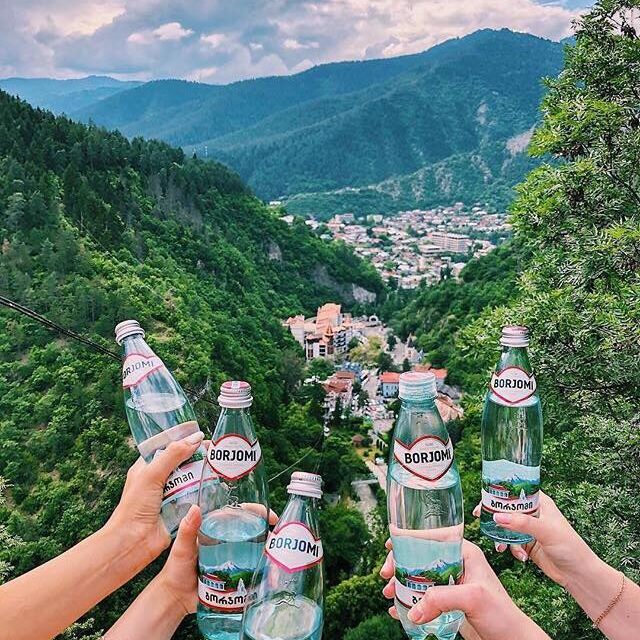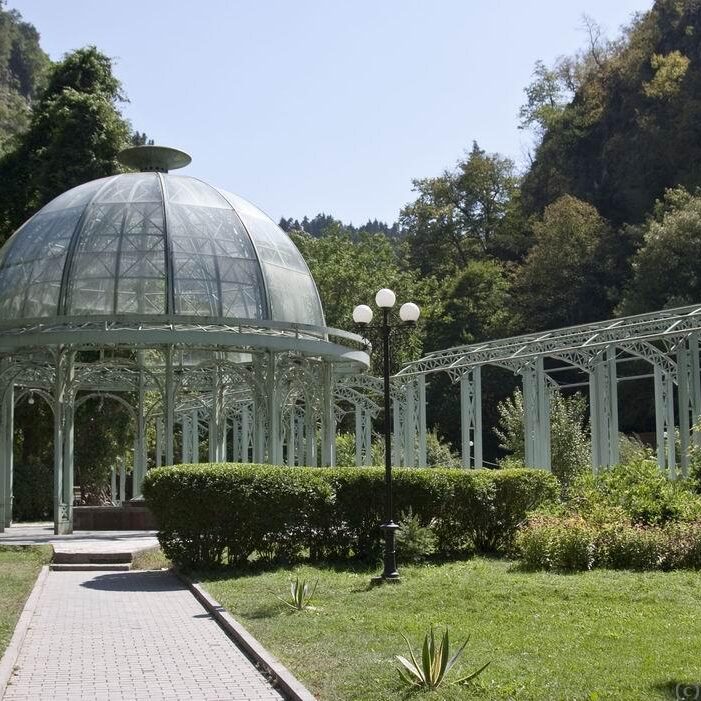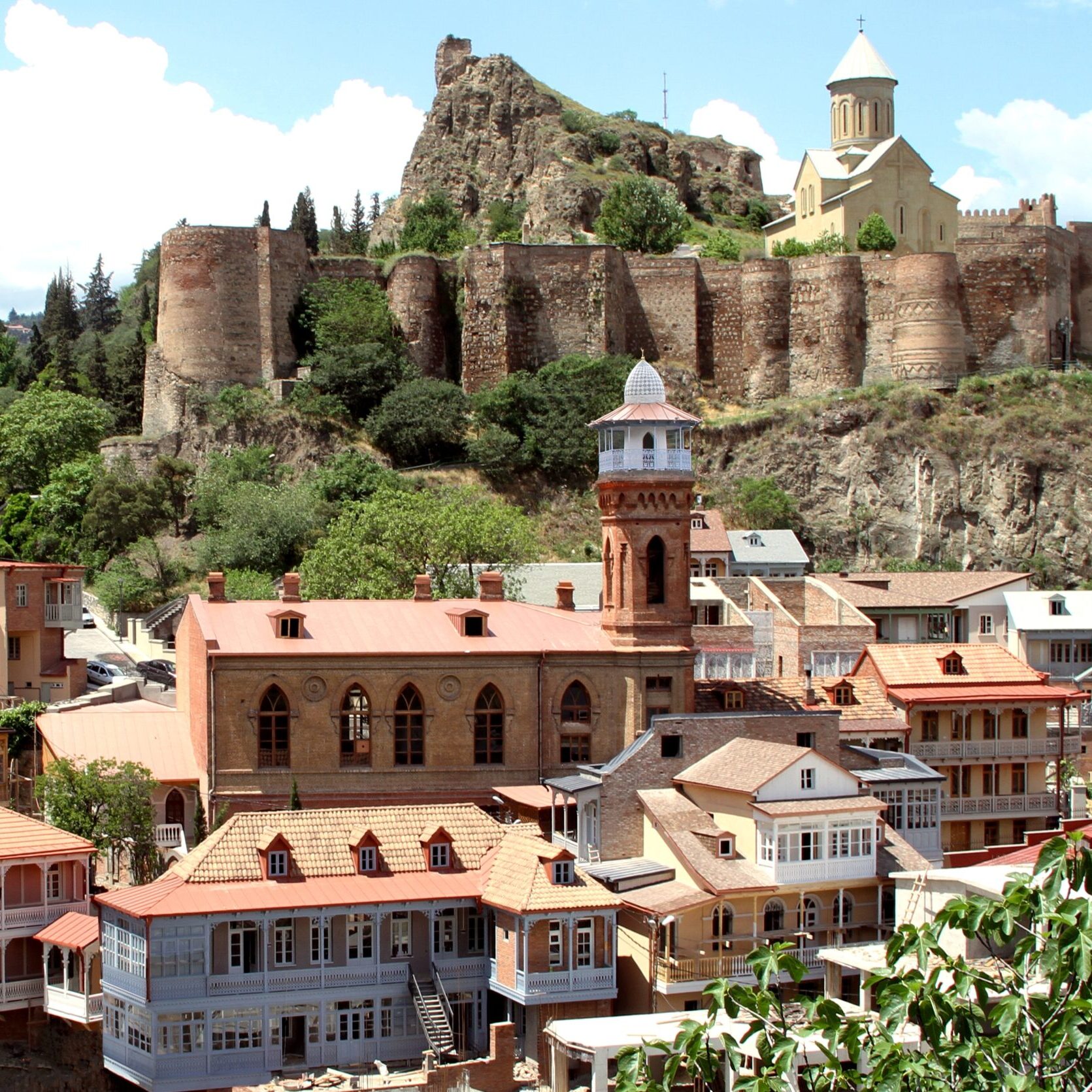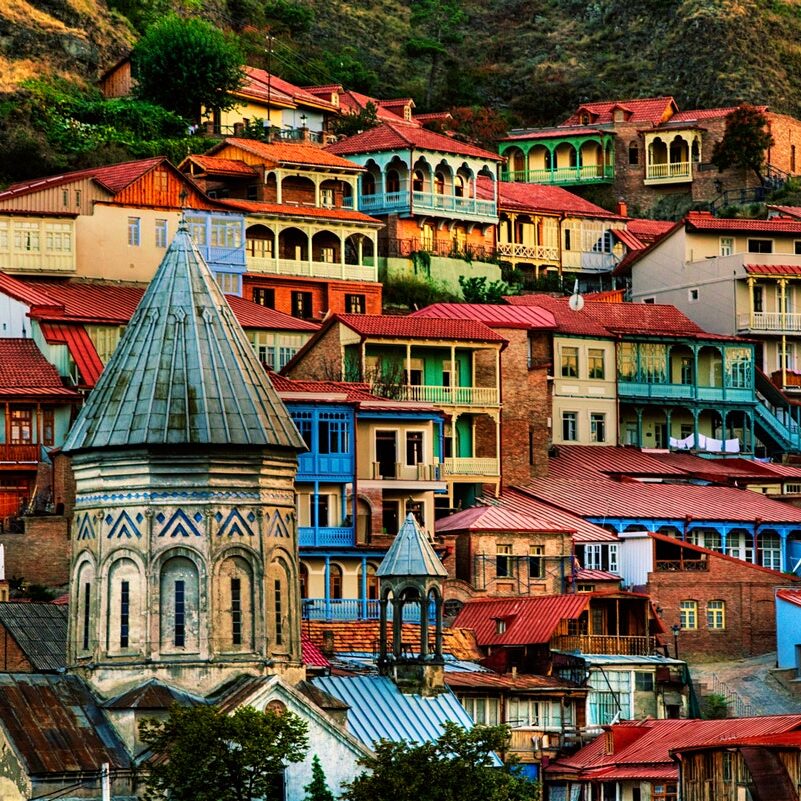Tour route: Tbilisi – Borjomi – Akhaltsikhe – Rabat Fortress – Kutaisi – Prometheus Cave – Wine Region (Kakheti) – Tbilisi
The price includes:
- meeting / seeing off
- transfers from Tbilisi airport (from other airports for an additional fee) to the hotel and back;
- accommodation in the center of the capital in a cozy hotel;
- two meals a day according to the program (without alcohol);
- 2 master classes;
- 2 tastings;
- accompaniment of a professional guide;
- transport services according to the program;
The price does not include:
- air tickets;
- medical insurance;
- Entrance tickets and cable cars;
- master class of Georgian cheese with tasting;
- everything that is not indicated “Price includes”.
Brief description of visited sites:
Metekhi Temple – One of the most famous monuments of Tbilisi, standing on the steep rocky bank of the Kura River. It was built in the 12th century and was the residence of the Georgian kings. In front of the temple there is an equestrian statue of the king, the city’s revivalist – Vakhtang Gorgasali.
Anchiskhati Church is one of the oldest sights of Tbilisi, built in the 6th century under the influence of ancient Palestinian architecture.
Zion Cathedral is the main religious attraction of all Georgia. This is one of the oldest buildings in the capital – V-VI centuries.
Mtatsminda is a small mountain (translated as Holy Mountain), which offers an excellent panoramic view of Tbilisi.
Narikala Fortress – The most famous and ancient landmark of Tbilisi, the soul and heart of the city. It has been standing since the foundation of the city itself. Narikala, located on the Great Silk Road, was the most fortified and impregnable in the fortification system of Tbilisi. The fortress can be reached by cable car. From here you can enjoy a panoramic view of old Tbilisi.
The palace of Queen Darejan was built by King Irakli II for his wife in the 18th century. The rock under the palace is especially beautiful, framed with moss and herbs, and water flows down it, which is saturated with silver and, as people say, cures eye diseases.
The famous Tbilisi sulfur baths have been decorating the city since the 16th century. The baths are built in the style of classical oriental architecture. These are low, squat buildings; the baths themselves are located underground at a depth of 9-11 meters. Today, baths are not just a decoration of the city, they work, here you can meet a real “mekise” – an oriental massage therapist. Tbilisi sulfur baths are very popular not only among tourists, but also among local residents, as they have an effective therapeutic and preventive effect, and after an oriental foam massage a person will feel reborn. Alexandre Dumas, who visited them on his trip to the Caucasus, spoke with delight about these baths. Alexander Sergeevich Pushkin, who wrote in 1829: “I have never seen anything more luxurious than the Tiflis baths either in Russia or in Turkey.” Since ancient times, traders and ambassadors, before entering Tbilisi, had to take sulfur baths, which had a disinfecting purpose.








